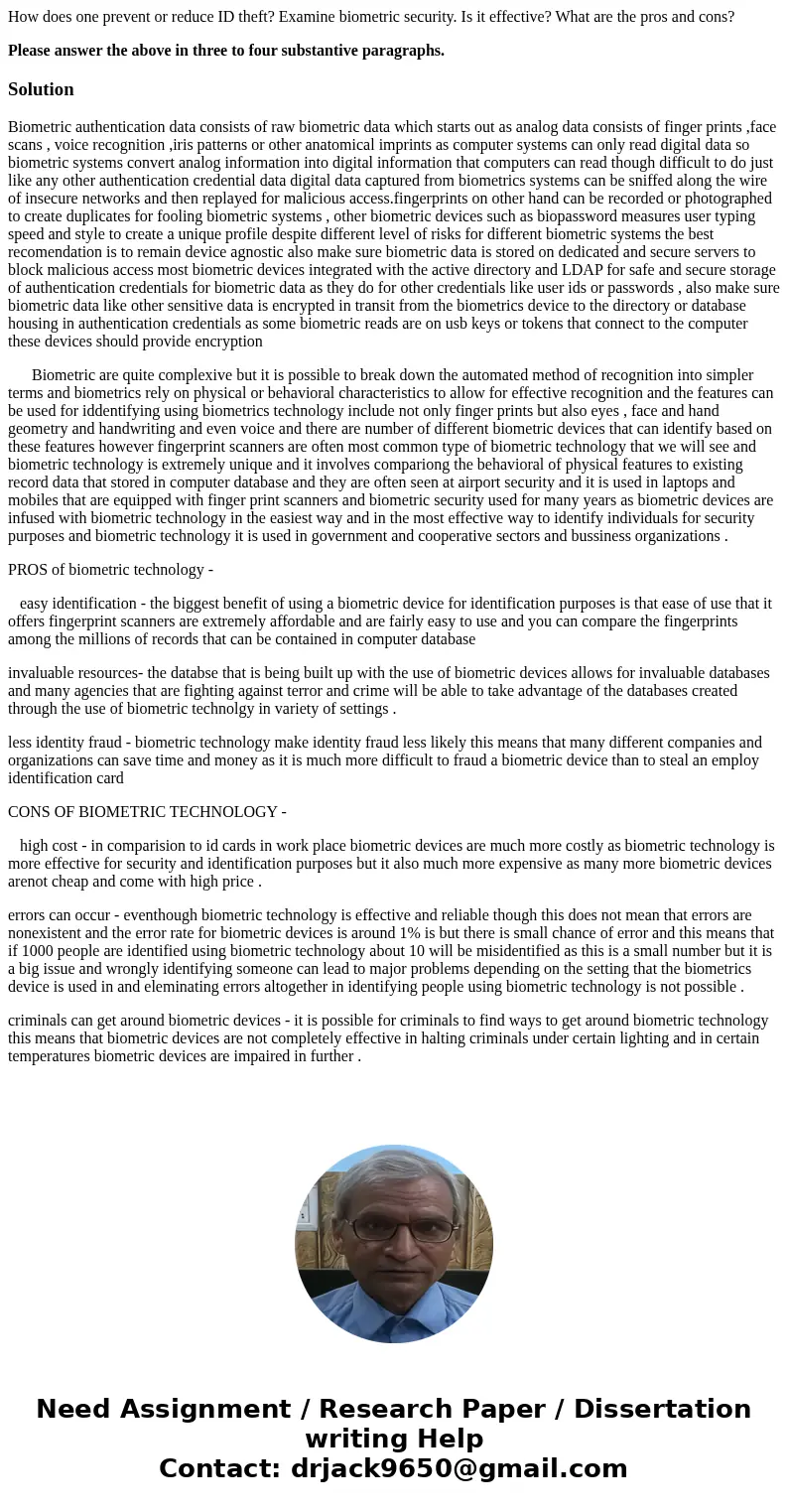How does one prevent or reduce ID theft Examine biometric se
How does one prevent or reduce ID theft? Examine biometric security. Is it effective? What are the pros and cons?
Please answer the above in three to four substantive paragraphs.
Solution
Biometric authentication data consists of raw biometric data which starts out as analog data consists of finger prints ,face scans , voice recognition ,iris patterns or other anatomical imprints as computer systems can only read digital data so biometric systems convert analog information into digital information that computers can read though difficult to do just like any other authentication credential data digital data captured from biometrics systems can be sniffed along the wire of insecure networks and then replayed for malicious access.fingerprints on other hand can be recorded or photographed to create duplicates for fooling biometric systems , other biometric devices such as biopassword measures user typing speed and style to create a unique profile despite different level of risks for different biometric systems the best recomendation is to remain device agnostic also make sure biometric data is stored on dedicated and secure servers to block malicious access most biometric devices integrated with the active directory and LDAP for safe and secure storage of authentication credentials for biometric data as they do for other credentials like user ids or passwords , also make sure biometric data like other sensitive data is encrypted in transit from the biometrics device to the directory or database housing in authentication credentials as some biometric reads are on usb keys or tokens that connect to the computer these devices should provide encryption
Biometric are quite complexive but it is possible to break down the automated method of recognition into simpler terms and biometrics rely on physical or behavioral characteristics to allow for effective recognition and the features can be used for iddentifying using biometrics technology include not only finger prints but also eyes , face and hand geometry and handwriting and even voice and there are number of different biometric devices that can identify based on these features however fingerprint scanners are often most common type of biometric technology that we will see and biometric technology is extremely unique and it involves compariong the behavioral of physical features to existing record data that stored in computer database and they are often seen at airport security and it is used in laptops and mobiles that are equipped with finger print scanners and biometric security used for many years as biometric devices are infused with biometric technology in the easiest way and in the most effective way to identify individuals for security purposes and biometric technology it is used in government and cooperative sectors and bussiness organizations .
PROS of biometric technology -
easy identification - the biggest benefit of using a biometric device for identification purposes is that ease of use that it offers fingerprint scanners are extremely affordable and are fairly easy to use and you can compare the fingerprints among the millions of records that can be contained in computer database
invaluable resources- the databse that is being built up with the use of biometric devices allows for invaluable databases and many agencies that are fighting against terror and crime will be able to take advantage of the databases created through the use of biometric technolgy in variety of settings .
less identity fraud - biometric technology make identity fraud less likely this means that many different companies and organizations can save time and money as it is much more difficult to fraud a biometric device than to steal an employ identification card
CONS OF BIOMETRIC TECHNOLOGY -
high cost - in comparision to id cards in work place biometric devices are much more costly as biometric technology is more effective for security and identification purposes but it also much more expensive as many more biometric devices arenot cheap and come with high price .
errors can occur - eventhough biometric technology is effective and reliable though this does not mean that errors are nonexistent and the error rate for biometric devices is around 1% is but there is small chance of error and this means that if 1000 people are identified using biometric technology about 10 will be misidentified as this is a small number but it is a big issue and wrongly identifying someone can lead to major problems depending on the setting that the biometrics device is used in and eleminating errors altogether in identifying people using biometric technology is not possible .
criminals can get around biometric devices - it is possible for criminals to find ways to get around biometric technology this means that biometric devices are not completely effective in halting criminals under certain lighting and in certain temperatures biometric devices are impaired in further .

 Homework Sourse
Homework Sourse